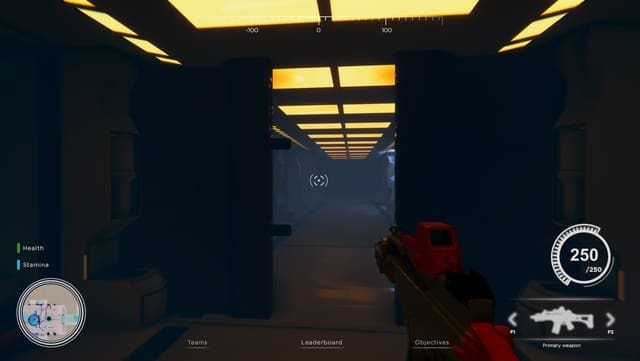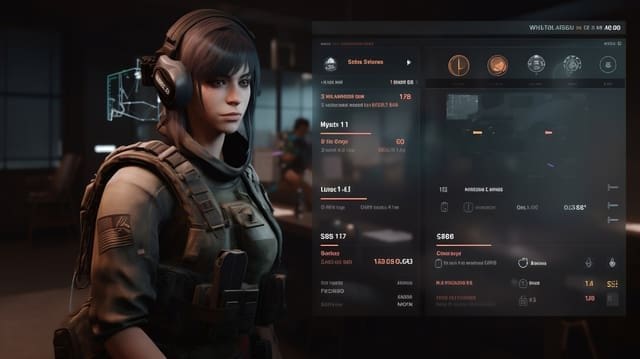FPS MOBA hybrids are changing the gaming world right now. These games blend first-person shooting mechanics with team-based strategy that creates something special. Take Deadlock for example – its closed alpha already has tens of thousands of players who can’t get enough of this fresh take on competitive gaming.
Traditional shooters put guns first. These new hybrids flip the script by making abilities and team tactics the stars of the show. Valorant proves this formula works. It mixes tactical round-based play with hero shooter elements that pull in players from different gaming backgrounds. Games like AceForce 2 and Operation Apocalypse show how developers tap into the 5v5 multi-role format on various platforms.
Horror elements fit perfectly in this hybrid space. The limited vision you get in first-person view combines with team-dependent gameplay and strategic depth to create genuine suspense and fear. This mix of genres isn’t just another trend – it could be the next big leap in competitive multiplayer gaming.
The Rise of FPS-MOBA Hybrids

Image Source: Geek Culture
The gaming industry keeps growing with state-of-the-art ideas and genre-blending. MOBAs started as a revolutionary branch of live strategy games. They first showed up as custom maps and later became a dominant genre.
How MOBAs evolved into new formats
MOBAs started as basic custom maps in strategy games before they grew into standalone titles with millions of players. A big change happened when major studios hired modders from successful mods like DotA: Allstars to create dedicated MOBA games. Riot Games brought in Guinsoo to help design League of Legends, which now has over 150 million registered users. Valve also hired IceFrog to develop Dota 2, which holds the record for the biggest cash prize tournament in esports history at $40 million.
These games exploded in popularity during the 2010s. MOBA tournaments made up 40% of the total esports prize pool in 2018. The League of Legends World Championship drew over 100 million viewers in 2019. This success made MOBAs a powerhouse in competitive gaming.
Why FPS mechanics were the next logical step
FPS games and MOBAs share basic elements despite looking different. Both types of games focus on micromanagement, positioning, and quick decisions. The cognitive demands of these genres complement each other perfectly – FPS games need fast movements and exact timing, while MOBAs need strategic planning and deep knowledge of character abilities.
This natural blend makes sense because:
- FPS gives quick, gut-level feedback
- MOBAs provide deep strategy and team coordination
- Both types already have huge, loyal communities
- The change in point of view creates fresh gameplay experiences
Game developers saw that mixing these elements could create something groundbreaking that appeals to both groups of players.
Examples of successful hybrids like Deadlock and Valorant
Valve made a bold move into hybrid games with Deadlock, which mixes elements from Dota 2 and Team Fortress 2. Deadlock uses third-person shooter controls with WASD movement, making it easier to play for people who know shooters like Counter-Strike. The game creates something new with a combined resource system called “souls,” which joins gold and experience into one currency.
Deadlock adds tower defense elements with four lanes of minions and towers, plus ziplines for quick map movement. Players can buy items in three categories—Weapon, Vitality, and Spirit—to increase their power.
Valorant also bridges these genres as an FPS with hero shooter elements. The game focuses on team coordination and tactical gameplay. Both games show how this mix creates deeper, more strategic shooting experiences while keeping the quick feedback of regular FPS games.
These hybrid games reshape competitive gaming. They create new skill combinations that mix quick reflexes with strategic thinking—a blend that players love as they look for new challenges.
Why Horror Fits Perfectly Into the Hybrid Model

Horror game designers know that fear runs on uncertainty. The FPS-MOBA hybrid model serves as a perfect canvas where horror elements flourish. These games use both mechanical and psychological aspects of fear to create compelling experiences.
The role of tension and pacing in horror gameplay
Great horror games control the rhythm between intense moments and calm periods. This tension-and-release pattern is essential to sustain fear without exhausting players. Players need recovery time after each terrifying encounter before the next scare. Games that blend first-person shooting with MOBA elements naturally create this pacing through objective-based gameplay and resource management systems.
Horror-strategy hybrids show how calculated decision-making can magnify fear. One developer points out that “strategy as a concept is fundamentally horrible” because players must make dehumanizing choices. FPS-MOBAs’ tactical elements create similar psychological pressure that forces players to make crucial decisions under threat.
How team-based strategy magnifies fear
Team coordination brings a powerful dynamic to horror settings. Fear becomes contagious when players must rely on teammates. XCOM proves this principle – the turn-based strategy “leaves you feeling vulnerable all the time” while fighting unknown threats.
On top of that, FPS-MOBAs’ multi-role format creates interdependency that raises tension. Players’ survival depends on others performing their specialized roles correctly. This reliance on teammates adds uncertainty and vulnerability that solo horror experiences cannot match.
Using limited vision and sound to create suspense
A first-person point of view naturally limits player awareness and creates perfect conditions for horror. Studies show that high-volume, timed sound effects work best at triggering fear responses when synchronized with visual elements. Medium-volume sounds maintain optimal anxiety levels.
The “fog of war” mechanics—common in strategy games and many FPS-MOBAs—create powerful unease. Players feel uncertain about what lurks beyond visible areas and must venture into unknown territory. Strategic sound design with directional audio cues helps create an immersive environment. Threats feel ever-present yet remain hidden from view.
Gameplay Mechanics That Make Horror Work

Horror games work best when specific gameplay mechanics create and sustain fear. FPS-MOBA hybrid games give us a chance to magnify these mechanics beyond traditional horror games.
Ability-based combat vs. traditional gunplay
Players experience more intense horror with ability-based combat systems than conventional gunplay. Traditional horror shooters usually give players limited ammunition and standard weapons. FPS-MOBA hybrids bring strategic abilities that make encounters more dynamic and unpredictable. BioShock showed this well by letting players combine weapons with special abilities called Plasmids alongside conventional firearms to gain tactical advantages.
Players face more intense horror when they must pick between different abilities under pressure. The game goes beyond simple shooting at enemies. Players must:
- Make strategic decisions about which abilities to use
- Manage cooldowns and resource costs
- Think about team synergy and positioning
This added complexity makes players think critically during terrifying situations. The psychological tension rises far beyond what traditional gunplay offers.
Vertical maps and line-of-sight tension
Map design plays a significant role in creating horror atmosphere, especially when you have vertical spaces and limited visibility. F.E.A.R. combined realistic enemy AI with environmental design to create tension even without enemies. Dead Space used ventilation shafts to limit movement and field of view, making players feel more vulnerable.
Vertical elements in maps leave players uncertain about threats above or below. The limited view from first-person perspective adds to this uncertainty. FPS-MOBA hybrid games can exploit these design elements to create scary moments as players move through environments with little information.
Role of respawn and item systems in horror immersion
Death without permanence might reduce fear, making respawn mechanics seem unsuitable for horror. In spite of that, some games have woven respawn systems into their stories creatively. Sekiro: Shadows Die Twice made death part of its narrative – NPCs caught “Dragonrot” when players died repeatedly, creating risks beyond simple failure.
Item management systems boost horror through lack of resources and tough choices. Players must decide what to carry in limited inventory spaces, adding another layer of strategy to the fear experience.
What This Means for the Future of Horror Games

The horror gaming world has seen a major move. Independent developers now lead innovation while AAA publishers have mostly left the genre behind. This development creates exciting opportunities for FPS-MOBA hybrids to find their place in fear-based gaming.
Opportunities for indie and AAA developers
Small developers have taken over the horror genre from cautious major publishers. One industry expert puts it well: “Horror has outgrown the major publishers. It belongs to indie developers now”. Small teams can now test unusual ideas that bigger studios might avoid. Their horror games turn out “thrilling, provocative, and subversive” because they don’t have to meet mainstream market expectations.
AAA studios can find their way back to horror through the FPS-MOBA framework. This hybrid model offers competitive multiplayer that appeals to major publishers and delivers genuinely scary experiences.
How Steam and Valve are shaping the trend
Steam leads the way in horror innovation, especially since launching Steam Direct in 2017. This change let anyone list games after a quick review. While small developers faced visibility challenges, experimental horror titles found new opportunities.
Valve balances its time between game development and hardware projects. The company made around $3.4 billion from Steam in 2017 and put much of it into virtual reality technology. Their VR game Half-Life: Alyx (2020) became “VR’s first killer app“. This shows how immersive technologies can change horror experiences.
Predictions for the next wave of horror hybrids
The future of horror in the FPS-MOBA space will likely include:
- AI-driven procedural content that creates unexpected threats
- Photo-realistic environments with Unreal Engine 5, promising “a new era of horror games”
- More VR horror experiences building on Resident Evil: Village’s success
As technology grows better, creating truly frightening multiplayer experiences becomes easier than ever.
Conclusion
FPS MOBA hybrids mark an exciting rise in horror gaming that will shape the next generation of multiplayer experiences. This piece shows how these genres naturally fit together to create truly terrifying gameplay. Players see limited vision in first-person view, and when combined with MOBA’s strategic depth, it creates the perfect setting for suspense and fear.
The team-based nature of these hybrids brings a psychological tension that solo horror games can’t match. Your survival depends on teammates doing their part right, which raises the stakes and emotional investment in every moment.
Our breakdown of gameplay mechanics – from ability-based combat to vertical map design – shows why this hybrid model works so well for horror. These elements make each match unpredictable and leave players feeling vulnerable throughout.
The best part? This meeting of genres creates new opportunities for both indie and AAA developers. While major publishers have moved away from traditional horror, the competitive multiplayer framework makes these hybrids commercially viable while delivering genuine scares.
Without doubt, as technology moves forward with VR, AI-generated content, and photorealistic environments, we’ll see even more frightening multiplayer experiences emerge. We’re just starting what could be horror gaming’s most innovative chapter – where strategic teamwork and first-person immersion create something new and terrifying.
FAQs
Q1. What makes FPS MOBA hybrids unique in the gaming landscape?
FPS MOBA hybrids combine first-person shooting mechanics with strategic team-based gameplay, creating a deeper and more engaging experience. They emphasize abilities and team strategy alongside traditional gunplay, appealing to players from multiple genres.
Q2. How do horror elements enhance the FPS MOBA hybrid experience?
Horror elements fit perfectly into the hybrid model by leveraging the limited vision of first-person perspective and the strategic depth of MOBAs. This combination creates an ideal environment for suspense and fear, amplifying the psychological tension through team-based gameplay.
Q3. What gameplay mechanics make horror work well in FPS MOBA hybrids?
Key mechanics include ability-based combat, vertical map design, and strategic item management. These elements create unpredictability and vulnerability, keeping players on edge throughout each match and enhancing the overall horror experience.
Q4. How are indie and AAA developers approaching FPS MOBA horror hybrids?
Indie developers are leading innovation in the horror genre, experimenting with unconventional ideas. AAA studios see the hybrid model as a commercially viable path, offering wider appeal through competitive multiplayer while still accommodating genuinely terrifying experiences.
Q5. What future trends can we expect in FPS MOBA horror hybrids?
Future trends may include integration of AI-generated content for unpredictable threats, focus on photorealistic environments using advanced game engines, and expansion of VR horror experiences. As technology advances, the potential for creating truly frightening multiplayer experiences is expected to grow exponentially.





















































